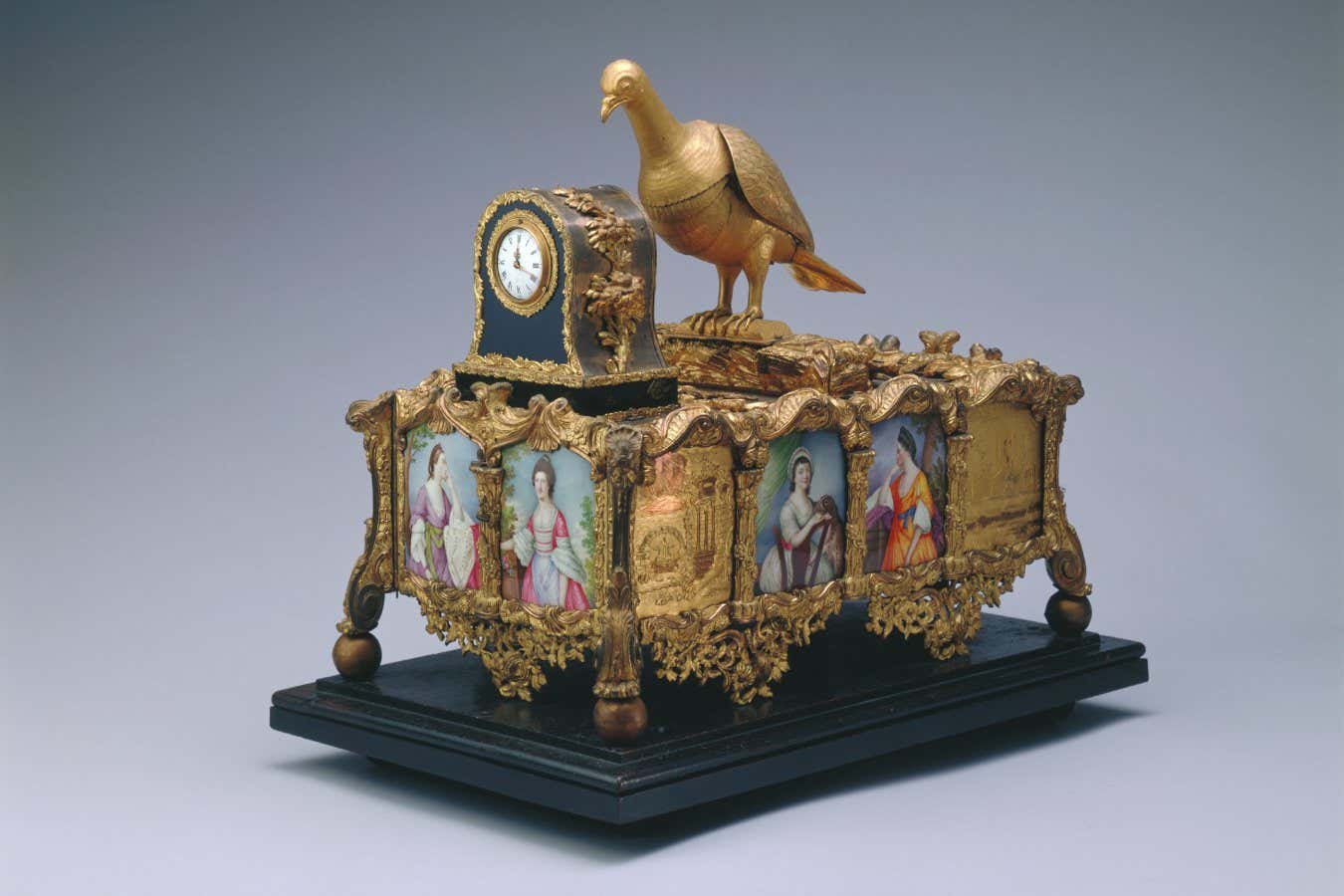
Zimingzhong with print of the coronation of Louis XIV
The Palace Museum
THESE lavish antique clocks don’t just represent time – they are also windows on a period of cutting-edge scientific innovation.
Each of these pieces, dating from 1662 to 1795, is part of the new exhibition Zimingzhong: Clockwork treasures from China’s Forbidden City at the Science Museum in London. This “explores how we measure time, and the technical expertise, creativity and international trade behind these centuries-old clocks”, says curator Jane Desborough.

Zimingzhong in the form of a pot of artificial flowers
The Palace Museum
Called zimingzhong in Mandarin Chinese, or “bells that ring themselves”, they were brought to China by European missionaries during the Qing dynasty and were highly prized by Chinese emperors, who collected and displayed them in their hundreds in Beijing’s Forbidden City palace to highlight their royal status and opulent taste.

Zimingzhong with Armillary Sphere and Original Case
The Palace Museum
Much of what made the zimingzhong so prestigious was the technology inside the intricate casings, requiring hundreds of skilled craftspeople to produce just one clock. Powered by mechanisms still used today in some timepieces, some of the complex devices may even have been used to time the duration celestial events.

European-style zimingzhong
The Palace Museum
The main image shows a zimingzhong depicting the coronation of Louis XIV, king of France, while the smaller images show others featuring (pictured from below the main image): a popular Chinese art form called penjing (“potted landscape”) with delicate artificial flowers; a miniature armillary sphere instrument displaying the movements of the stars and planets around Earth; and engravings by the 18th-century painter Joshua Reynolds (pictured above). The exhibition is on until 2 June.
Topics:

